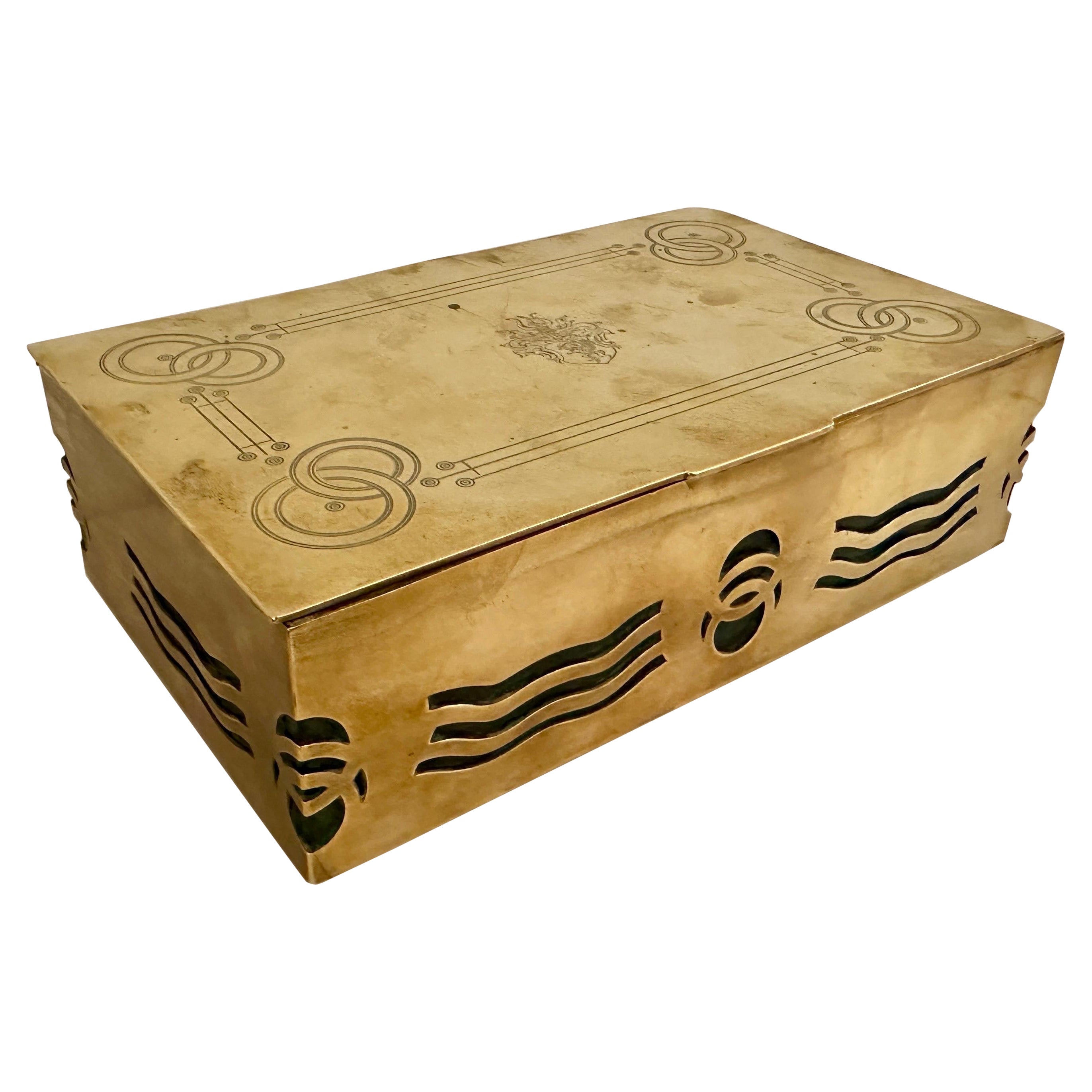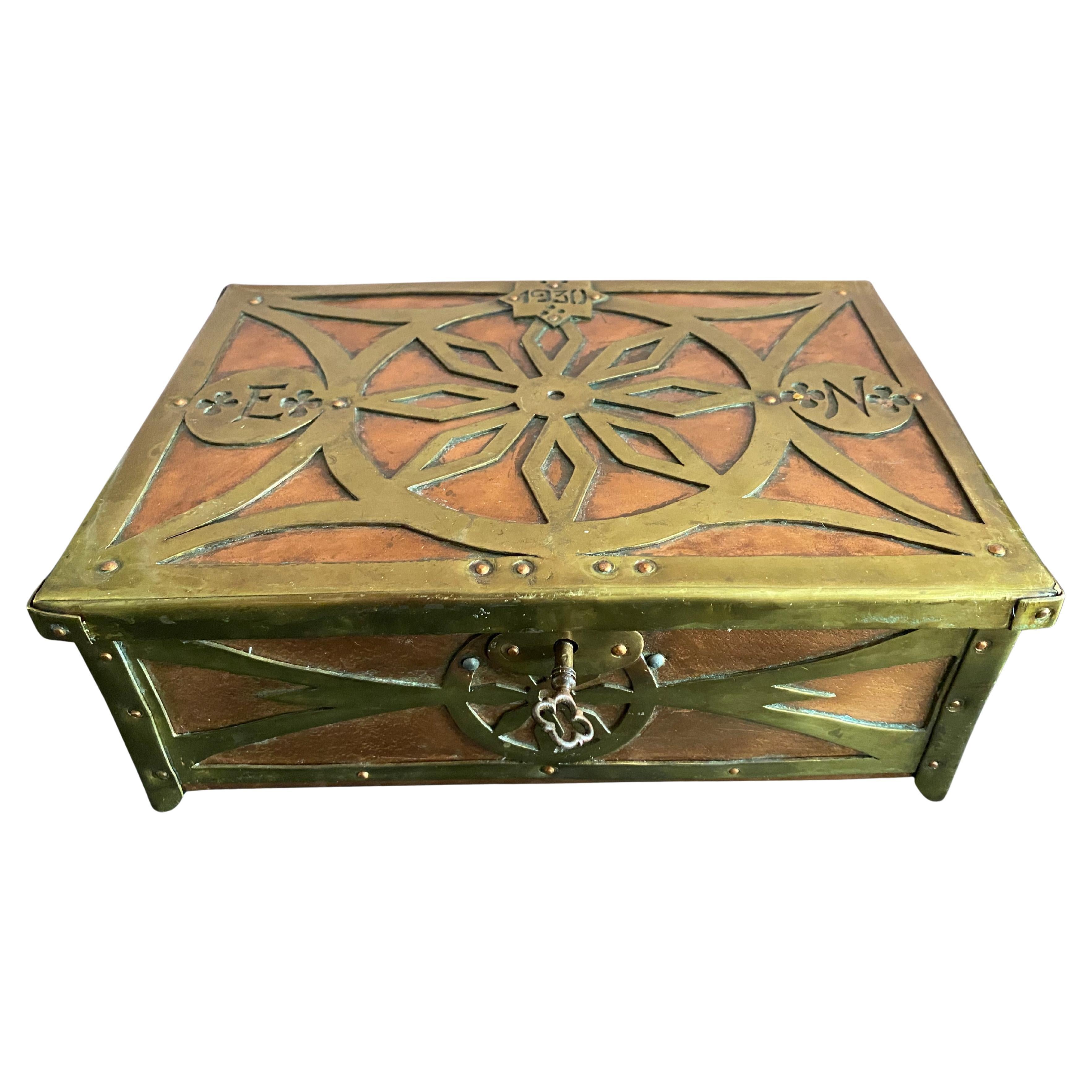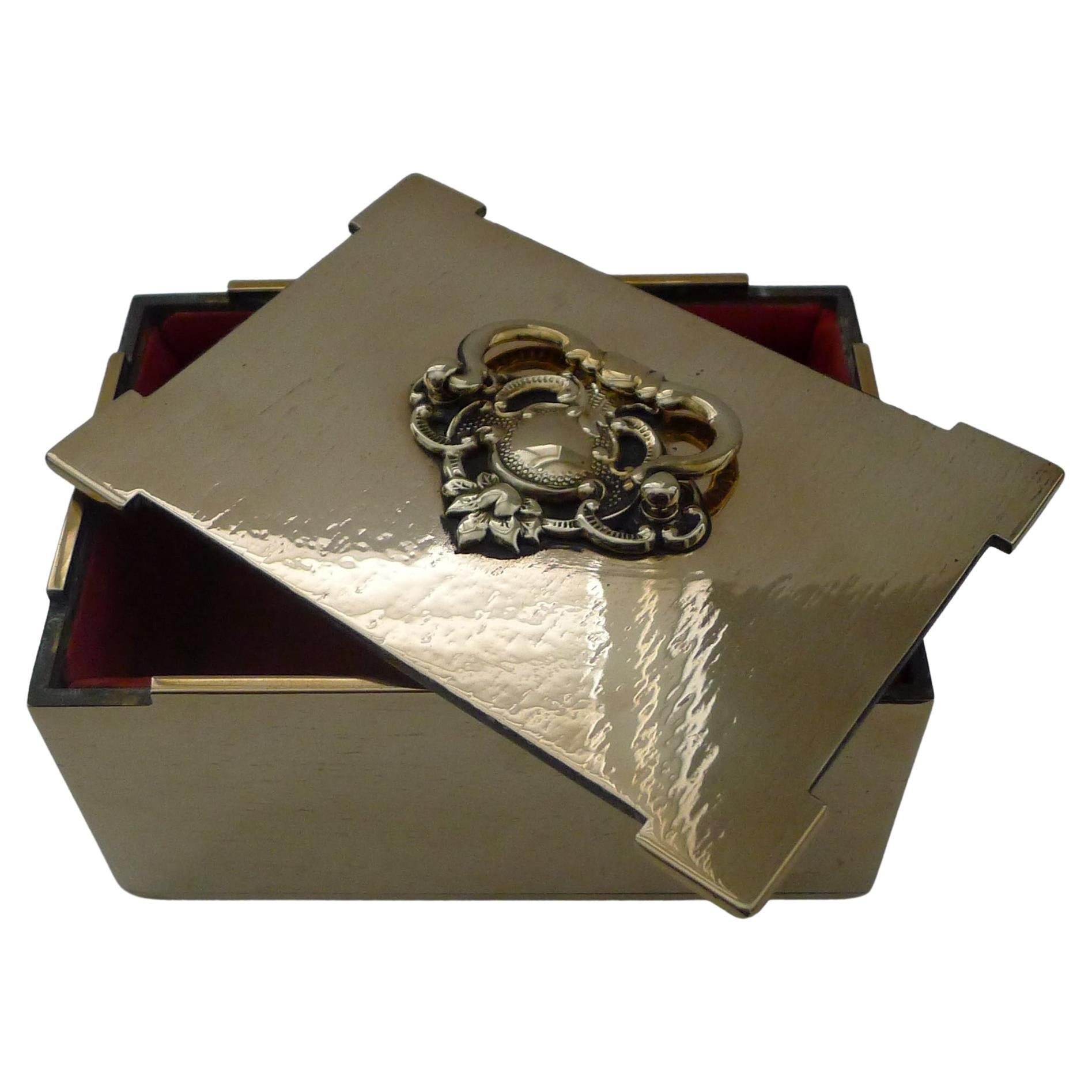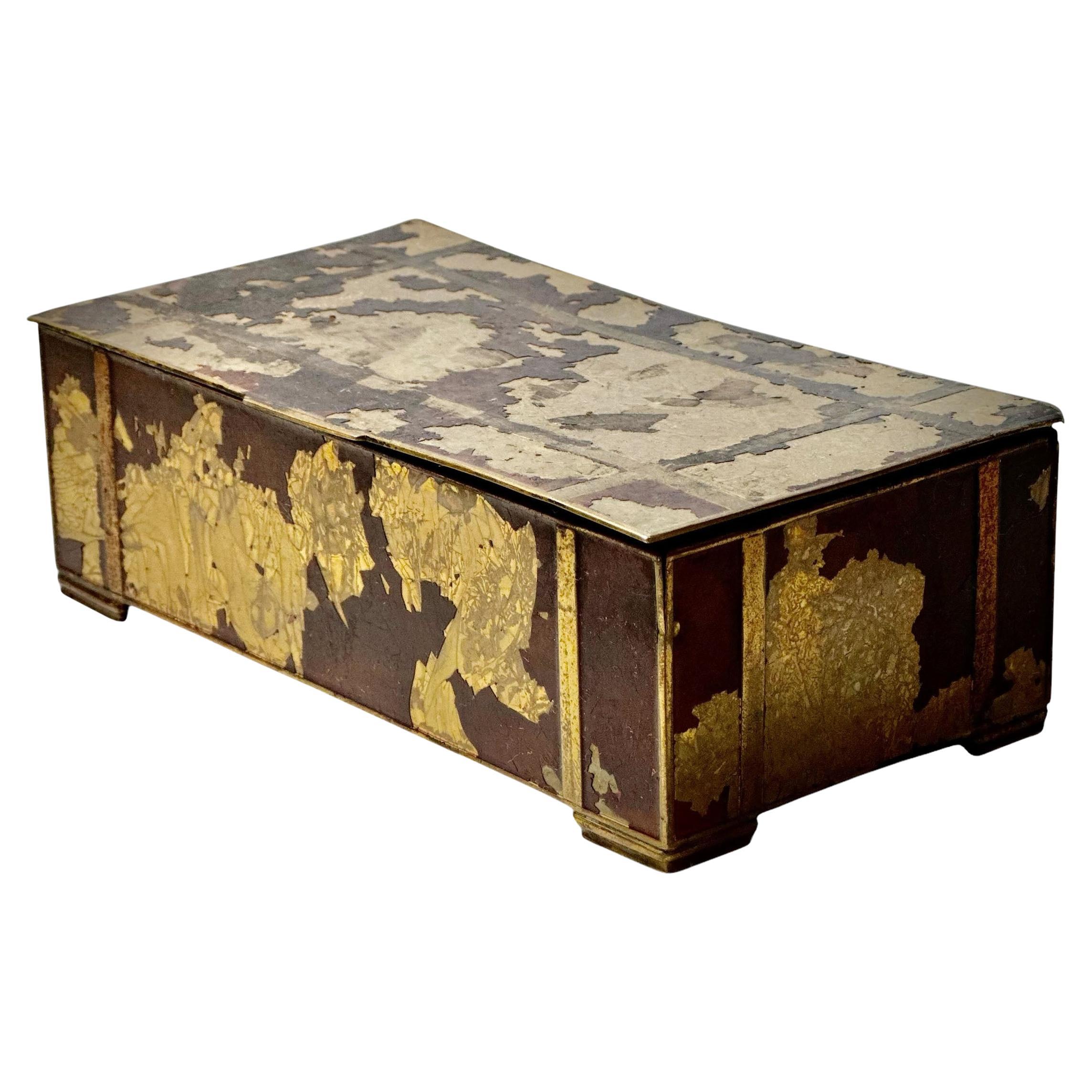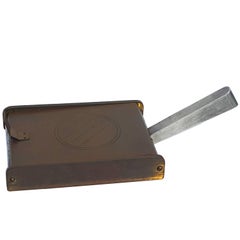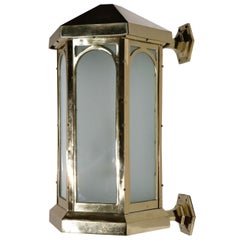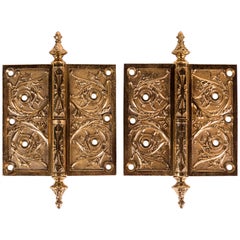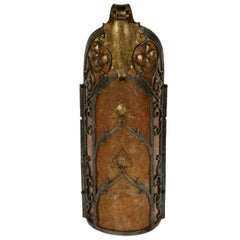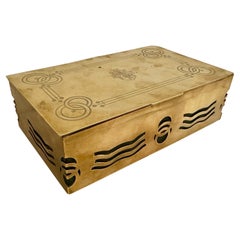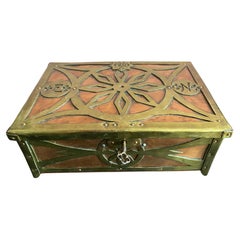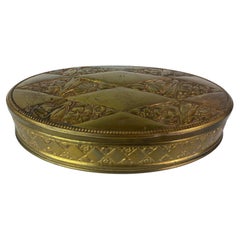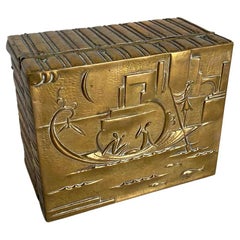Items Similar to Brass-Plated German Secessionist Keepsake Box
Want more images or videos?
Request additional images or videos from the seller
1 of 5
Brass-Plated German Secessionist Keepsake Box
$325
£248.65
€284.37
CA$462.77
A$501.24
CHF 265.48
MX$6,064.22
NOK 3,337.46
SEK 3,111.22
DKK 2,123.81
About the Item
Brass-plated German secessionist keepsake box.
- Dimensions:Height: 2.5 in (6.35 cm)Width: 8.25 in (20.96 cm)Depth: 5.25 in (13.34 cm)
- Place of Origin:
- Period:
- Date of Manufacture:1910
- Condition:
- Seller Location:Los Angeles, CA
- Reference Number:1stDibs: LU93883443832
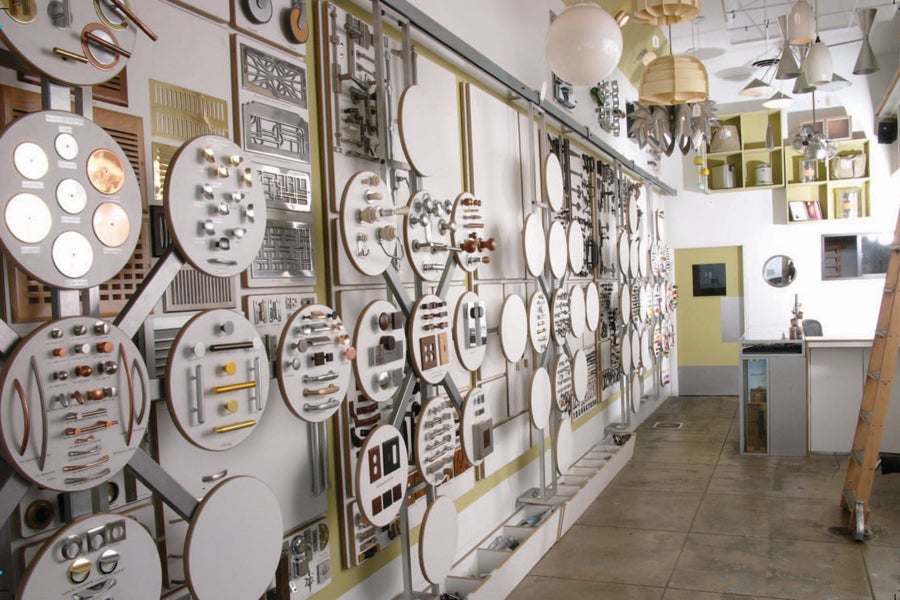
About the Seller
5.0
Vetted Professional Seller
Every seller passes strict standards for authenticity and reliability
Established in 1978
1stDibs seller since 2012
60 sales on 1stDibs
Typical response time: 22 hours
- ShippingRetrieving quote...Shipping from: Los Angeles, CA
- Return Policy
More From This Seller
View AllBrass and Aluminum Streamline Silent Butler
Located in Los Angeles, CA
Streamline caddy signed fisher-crome, Philadelphia.
Category
Mid-20th Century American Ashtrays
Cast Brass Exterior Sconce
Located in Los Angeles, CA
Large exterior cast brass sconce, circa 1930.
Category
Vintage 1930s American Wall Lights and Sconces
Materials
Brass
Two Victorian Cast Brass Hinges
Located in Los Angeles, CA
Two elaborate Victorian cast brass hinges; both left handed.
Category
Early 20th Century American Architectural Elements
Materials
Brass
$1,250 / set
Cast Brass Sconce
Located in Los Angeles, CA
Cast brass exterior sconce with mica.
Category
Early 20th Century American Wall Lights and Sconces
Materials
Brass
$3,250
Pair of Solid Brass Victorian Hinges
Located in Los Angeles, CA
Pair of heavy cast brass, heavily decorated hinges. Measures: 8 inches wide, 6 inches high. Stamped on back "Patent June 1869".
Category
Antique 19th Century American Doors and Gates
Materials
Brass
Pair of Belgian Store Door Handles
Located in Los Angeles, CA
Pair of brass and aluminum door handles from a Belgian storefront. Brass panels feature an abstract bas-relief. Handles may be mounted back to back or side by side.
Category
Vintage 1960s Belgian Balustrades and Fixtures
Materials
Aluminum, Brass
$1,250 / set
You May Also Like
Austrian Secessionist Brass Carved Box
Located in North Miami, FL
This is a wonderful antique box from the Vienna Secession period. Adorned with elegant carved details and a wood veneer interior.
Category
Early 20th Century Austrian Vienna Secession Decorative Boxes
Materials
Brass
Art Deco Copper and Brass Box
Located in Waddinxveen, ZH
Beautifully made and decorated box in brass and copper. Key is present.
Category
Vintage 1930s German Art Deco Decorative Boxes
Materials
Brass, Copper
Brass jewelry box in style of Dagobert Peche and Wiener Werkstätte
By Dagobert Peche, Wiener Werkstätte
Located in Banská Štiavnica, SK
Brass jewelry box in style of Dagobert Peche and Wiener Werkstätte.
Category
Antique Early 1900s Austrian Jugendstil Jewelry Boxes
Materials
Brass
Wonderful Brass on Wood Box by Austrian Designer Karl Hagenauer
Located in Minneapolis, MN
This is a wonderful and rare piece by the great Austrian Designer, Karl Hagenauer (1898-1956). The box, which is hammered brass over wood, depicts a scene typical of Hagenauer's work...
Category
Vintage 1930s Austrian Art Deco Decorative Boxes
Materials
Brass
$900 Sale Price / item
50% Off
Antique French Cast Brass Jewellery Box / Casket, circa 1900
Located in Bath, GB
A wonderful and heavy jewelry box or casket. The rectangular box has a lift off lift with the aide of the folding handle to the centre of the lid. The brass has a slight naturalistic...
Category
Antique Early 1900s French Edwardian Jewelry Boxes
Materials
Brass
Antique Bronze German Box
Located in Tampa, FL
A late 1940s bronze box with a wooden interior. Signed Germany with a patent number.
Category
Vintage 1940s German Decorative Boxes
Materials
Bronze
More Ways To Browse
Antique Glove Boxes
Antique Pewter Box
Antique Spanish Box
Dore Box
Victorian Painted Box
19th Century Leather Covered Box
Antique Brass Pins
Antique Pin Cushion
Antique Pin Cushions
Antique Sandalwood
Belgium Box
Post Horn
Taj Mahal Vintage
Wooden Box French
Japanese Meiji Period Box
Lidded Metal Box
Pearl Inlay Box
Tessellated Stone Box
